Audi 2.0t TSI Engine Common Problems


The 2.0T TSI engine is found in almost all of Audi’s line up since 2009-present. There have been several variations of this engine used in the VW and Audi line up over the years, and each generation has their own quirks, along with pros and cons. One major difference from the VW side, is the addition of 2nd generation TSI, utilizing AVS (Audi Valve Shift), and the use of Ethanol fuels. Earlier 2.0T’s from 2009-2011.5 (CAEB,CAED engine codes) used a plastic intake manifold, while the 2012-2016 2.0T’s (CMPA, CPMB engine codes) used a plastic lower section, and an aluminum upper section. These were used to house improved PCV vent distribution tubes, along with an additional injector for ethanol fuels.
Need help repairing your Audi? Schedule an appointment at our Audi Repair Shop located in the Charlotte Area.
Audi models with the 2.0T TSI Gen1 Engine
A4 2.0T TSI Gen1 2009-2011.5
A5 2.0T TSI Gen1 2009-2011.5
A6 CVT (FWD) 2.0T TSI Gen1 2012-2014
Q5 2.0T TSI Gen1 2009-2011.5
Audi models with the 2.0T TSI Gen2 Engine
Audi A4 2.0T TSI Gen2 2012-2016
Audi A6 2.0T TSI Gen2 2014-2015
Q5 2.0T TSI Gen2 2012-2017
If you have either of these models these TSI Audi models your engine is slightly different and we have a TSI Common Problem Article HERE that is more applicable.
A3 2.0T TSI 2008.5 - 2014
TT 2.0T TSI (except TT-S) Mk2 2008.5 - 2014

2.0T TSI Ignition Coils, Misfires, and Fuel Injectors

If you are having misfire faults in your vehicle, it's very common in these vehicles to have problems beyond a faulty coil or spark plug. Here’s a few tips to keep in mind when attempting to diagnose misfires:
In the dealership, it’s common practice to first check compression on all cylinders. If you’re outside of the dealership, and don’t have easy access to those tools, you can check all of the spark plugs. Look at the electrode and ground of the plug. If they’re worn, discolored, or any ceramic missing from the center electrode, replace them. If there’s ceramic missing, you may have bigger concerns, but we’ll get to that later. If replacement of the spark plugs has helped, but you still have misfires, swapping ignition coils to a neighboring cylinder is a way to rule out a faulty coil. If you find any to be suspect, it’s best to replace them all. There have been several updates to these coils over the years, so be sure you’re getting the most up to date revision available. If you find that any spark plug is fuel soaked, or oil residue (plugs will have a dark brown build up) on the electrode, you will need to alleviate those concerns before proceeding further.
Fuel injectors have an extended warranty on them depending on the year, and vehicle model, up to 10yr/120k miles. Keep in mind, this warranty extension is ONLY for stock vehicles that have NOT been modified via aftermarket software or piggyback systems. And yes, it is a requirement for dealership personnel to verify software coding before validating any warranty extension for a fuel injector concern. If any of the spark plugs were wet with fuel, you can check the cylinder with a borescope, and look at the tops of the pistons for fuel build up. Sometimes, if you turn the engine over with the fuel injector harness disconnected, you can see fuel squirt up from the spark plug tubes. This test doesn’t work if the injector is stuck closed, so please keep this in mind.
One last thing to check would be the compression on each cylinder. To do this, you will need to disconnect the 8-pin connector on the lower side of the intake manifold that powers each injector. This cuts fuel to the injectors while cranking the engine over during your compression test, which can damage your compression gauge. Once that’s done, remove all ignition coils and spark plugs, use your compression tester and spin the car over via the starter for 4-8 revolutions. A good, healthy engine will have 160-200 PSI of compression.
If you have low compression, try adding a few drops of oil down the spark plug tube to help with lubrication of the piston rings. Repeat this for each cylinder. If your numbers are still low, you’ll need to perform a cylinder leak down test. This test will need to be performed with whatever cylinder you’re testing, positioned at top dead center. You can use a long screwdriver carefully inserted into the spark plug tube, and have a helper rotate the engine over by hand and carefully observe the position. Once at top dead center, insert your leak down tester through the spark plug port. Slowly add pressure into the cylinder and observe your readings. If you have leak down, listen to wear the air is escaping from. If the air is going into the intake, you have a damaged intake valve. If your air is bypassing into the exhaust, you have a damaged exhaust valve. If you have air escaping down into the crankcase, you have a damaged piston ring, or broken piston ringland.
Associated Parts
- Ignition Coil for 2.0t Audi - OEM Audi
- Ignition Coil for 2.0t Audi (Red R8) - Bosch
- Spark Plug for 2.0t Audi - OEM Audi
- Spark Plug for 2.0t Audi - Bosch
- Fuel Injector for 2.0t Audi - OEM Audi
- Fuel Injector for 2.0t Audi - Bosch
- OBDeleven VW | Audi Scan Tool

2.0T TSI Positive Crankcase Vent
Much like the VW’s with the TSI engines, Audi has the same problems. There have been several revisions to the PCV systems between Gen1 and Gen2 TSI engines, and it’s important to adhere to certain revisions, as you could introduce oil consumption issues into your engine. Audi uses a lower pressure regulating unit in their vents, and since 2012, those newer vents have been used throughout the Gen2 lineup. Earlier Gen1 engines that were retrofitted, or had oil consumption measurements, or piston replacements done, all use an oil separator with a molded white cap on the regulating unit. If your vehicle does not have the white cap, be sure you get the correct regulating unit for your vehicle.
The faults for this concern range from system too lean at idle, O2 sensor performance, along with Intake Air System Leak. One quick way to check the PCV operation is to open the hood, remove the plastic engine cover and find the vent hole on the circular diaphragm on the valve. If you can put your finger over the vent hole and any whistling goes away, you have a bad breather.
Associated Parts
- Audi 2.0t PCV Valve Assembly (OEM Updated Version)
- Audi 2.0t PCV Valve Assembly (Vaico)

2.0T TSI Intake Manifold Runner Fault Codes

Much like VW, the Audi 2.0T TSI Gen1 engines suffer from manifold fault codes as well. With the addition of the Gen2 engines, we don’t see problems with them as frequently as Gen1 TSI’s, mainly in part to the improved design of the lower intake manifold section. This doesn’t mean it won’t happen, but not as common as the VW counterpart.
Associated Parts
- Intake Manifold for Audi 2.0t - OEM Audi - Required addition part HERE

2.0T TSI Gen1 (longitudinal engines) Boost Pressure Faults

Audi has had a few problems with the early 2009-2012 turbos used on the Gen1 2.0T TSI engine. The turbo is known for premature failure due to a loose waste gate rod between the boost diaphragm, and the internal waste gate. If you have faults for charge pressure negative deviation, or supercharger/turbocharger under boost faults, you first want to check for any boost leaks, vacuum leaks, or damaged intercooler. If you have no external leaks, check the N249 turbo bypass valve or more commonly known as the diverter valve. Early designs used a rubber diaphragm to seal between the valve housing and the control piston. If the inner section is torn, missing entirely, comes apart in several pieces, or has oil leaking out from the electrical housing, replace it.
While you’re there inspecting the valve, check the turbocharger waste gate actuator rod for any play. If the rod moves freely, or has any chatter coming from inside of the turbo, you very well could have a faulty turbo. Another thing to check, is the diaphragm on the waste gate. This valve is operated by boost pressure, so if you have a boost pressure test gauge, you can simply apply pressure to the valve, and verify that it holds pressure internally. If there are any leaks internally, only way to repair this part, is by replacing the completed turbo and exhaust manifold assembly.
Associated Parts
- Turbo Bypass (Diverter) Valve (N249) - OEM Audi
- Audi 2.0t Turbocharger with Wastegate - OEM Audi
- Audi 2.0t Turbocharger with Wastegate - IHI Turbo

2.0T TSI Gen1 High Pressure Fuel Pump Failures

Again, we have common failures between the VW and Audi brands, this time with the high pressure fuel pumps located on the intake side of the camshaft. The pumps have an updated roller bearing that rides on the camshaft, decreasing wear, when compared to the earlier FSI engines. Since these pumps operate at a much higher rate than the FSI pumps, we tend to see failures around the internal fuel pressure seals. When these seals fail, it allows fuel from the internal workings, to pass through the compression piston and into the engine oil. When this happens, you will have faults relating with rich conditions off idle, O2 sensor performance, or other various rich faults. It’s best to pinpoint and work off of those other faults before jumping the gun on an expensive high pressure fuel pump.
Associated Parts
- Audi 2.0t High Pressure Fuel Pump - OEM Audi
- Audi 2.0t High Pressure Fuel Pump - Hitachi

2.0T TSI Gen1 and Gen2 Carbon Build Up

As with any direction injected engine of recent years, we’re plagued with carbon build up on the intake valves. You may potentially have intermittent misfire faults, but there’s one key way to pinpoint these misfires. If you have access to a OEM Dealership scan tool, VagCom, or equivalent, you can look at the details of when the misfire faults occurred.
Looking at the engine coolant temperature, and the intake air temperature when the fault occurred helps a lot. If you have a misfire and you suspect carbon build up, you will usually have misfires at cold start, within the first few minutes of driving. The reason for this is simple, with a cold engine, the carbon is hard and prevents the intake valves from fully opening. Once the engine warms up after a few minutes, the misfires decrease and sometimes, go away entirely, until the next cold start. The time frame of when the buildup happens, all depends on driving style and ambient temperatures. With more localized driving and putt-putting around town, you will have carbon build up more rapidly.
Associated Parts
- Intake Manifold Gasket for 2.0t - OEM Audi
- Fuel Injector Seal kit for Audi 2.0t - OEM Audi

2.0T TSI Gen1 and Gen2 Timing Chain Tensioner Failures

As with all other 2.0T TSI engines, both transverse and longitudinally mounted engines can suffer from timing chain tensioner stretch, or failures. There are several faults that can be set based on stretch, and they vary by year and engine generation. Rule of thumb, if you can inspect the timing chain tensioner, and see more than 7 teeth exposed on the tensioner piston, it’s timing to replace the timing chain and tensioning unit. There have also been several revisions to these parts between the Gen1 and Gen2 engines, along with updated guides, brackets, and the camshaft bridges, so it’s best to get in touch with your parts professional for the most updated parts for your vehicle.
Associated Parts
- Audi 2.0t Basic Timing Chain Tensioner Update Kit
- Audi 2.0t Basic Timing Chain and Chain Tensioner Update Kit
- Audi 2.0t Complete Timing Chain Kit
- Audi 2.0t Bent Valve Fix Kit w/ Cylinder Head

2.0T TSI Water Pump Failures

Waterpumps on 2.0t engines can have concerns around leaking. Most often this will result of a failure of the gasket where it bolts to the cylinder block, or a failure of the composite housing itself cracking. While there have been many revisions of this water pump the latest version does not appear to be faulure prone.
It is important to note that there is a circumstance that may cause premature failure of your water pump. This would be important to look at if you are installing a new waterpump or to prevent premature failure of the one in your vehicle. Oil leaks can, and will cause premature failure of a water pump. This is generally coming from the valve cover area and will leak down onto the waterpump below. If this oil leak is not quickly addressed the oil will seep onto the waterpump. This will compromise the seal and the housing of the waterpump causing premature failure. If you are replacing a waterpump be sure this is not an issue on your vehicle.
Associated Parts
- Waterpump for 2.0t Audi Engines - OEM Audi
- Waterpump (Aluminum) for Audi 2.0t TSI
- Waterpump Kit (Aluminum) for Audi 2.0t TSI

2.0T TSI Thermostat Failures

These faults aren’t as common, as the water pump housings themselves typically leak before these faults set, but just in case, sometimes you will have faults set for Cooling System Performance. This fault sets in the engine control module when the different coolant temperature sensors all see different temperatures. There are sensors in the lower radiator hose, rear coolant flange, and in the water pump assembly. If these readings vary by too much, this fault will set. If you have access to look at these readings through a scan tool, you will want to look at the measured values for these sensors. Most likely, you will have a thermostat that is stuck open. This thermostat is internal to the water pump assembly, so you’ll have to replace it as a combined part.
Associated Parts

2.0T TSI Oil Consumption Concerns

This is quite a loaded topic, as there are many variables that can contribute to consumption concerns. Oil quality, oil capacity, driving styles (city, highway, combined) and oil viscosity (thickness) all play a role in consumption. From a dealership or independent shop’s perspective, all external leaks have to be repaired before any internal consumption measurement can be evaluated. Valve cover gaskets, vacuum pump seals, PCV breather valves, rear main crankshaft seals, front crankshaft seals, and the turbo should all have be checked for leaks before proceeding. Rear main leaks aren’t as common as they are on the VW side, but it’s still something to look into. The manufacturer advises that it’s not abnormal to burn some oil between services. Half a quart to 1 quart isn’t uncommon for these engines. The extended service intervals of 10,000 miles plays a role in that at times, but if you’re changing oil every 5,000, you’ll have less consumption between services.
Several years ago, there was a class action lawsuit brought against Audi for high oil consumption in 2.0T TSI engines produced between 2009-2011.5. As part of the lawsuit settlement, the dealerships were replacing the PCV breather (commonly known as the oil separator), front crank seal, and performing a ECU software update. This new PCV breather lowers the pressure in the crankcase breather, and helps reduce oil blow-by through the PCV system and intake.
Once these updated parts were installed, and a software update completed, technicians would either weight the oil in the engine, or perform an electronic oil measurement through the engine software. This would document how much oil was in the engine. After a period of time, and mileage, customers were asked to return to evaluate the consumption rate through a second measurement test. Once the information was evaluated, a determination would be made whether the consumption rate was within the agreed specification from the lawsuit settlement. If the consumption was outside of those limits, repairs would then be made to proceed with piston ring replacement. There are other factors that are taken into consideration when this process in approved, such as piston skirt damage upon disassembly, damaged cylinder walls from a broken or damaged ring, or bore measurements are outside of wear limits. In the rare case that there’s damage to the cylinder walls, a complete long block (engine block and cylinder head) would have been installed.
When these piston ring jobs were completed, new pistons were installed with tighter fitting rings to fix the consumption issues. This job involves completed engine tear down, so all new seals, gaskets, hardware, etc. was used to reassemble everything. Crankshaft rod bearings were replaced on a case-by-case basis by some dealers, along with timing chain tensioners, chains, and guides. If you have any questions about what was replaced during this repair, it’s best to get in contact with the dealership who performed this work, as each job is unique to each car.
Associated Parts






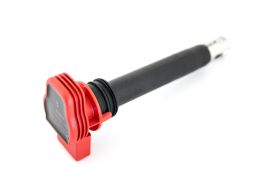

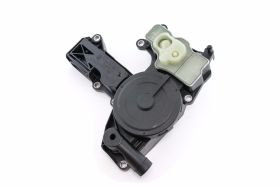
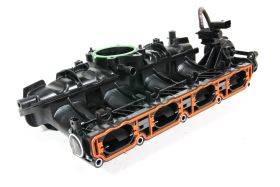

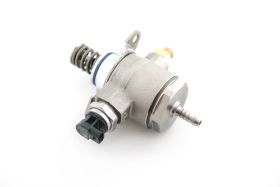
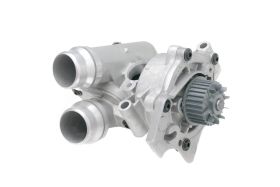
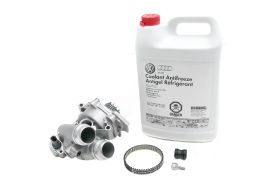








Comments
Originally EA888 engines were to have direct and port injection. This did not happen in America. If this was Europe only how difficult would it be to convert my 2015 A4 B8.5 (CPMB) to the dual system? Ron.
Re: Audi 2.0t TSI Engine Common Problems: When was this article written? Ref # for my 2013 GTI is 06H103495AH - How do I know what I'm getting? A software update after the lawsuit, or on every current revision?